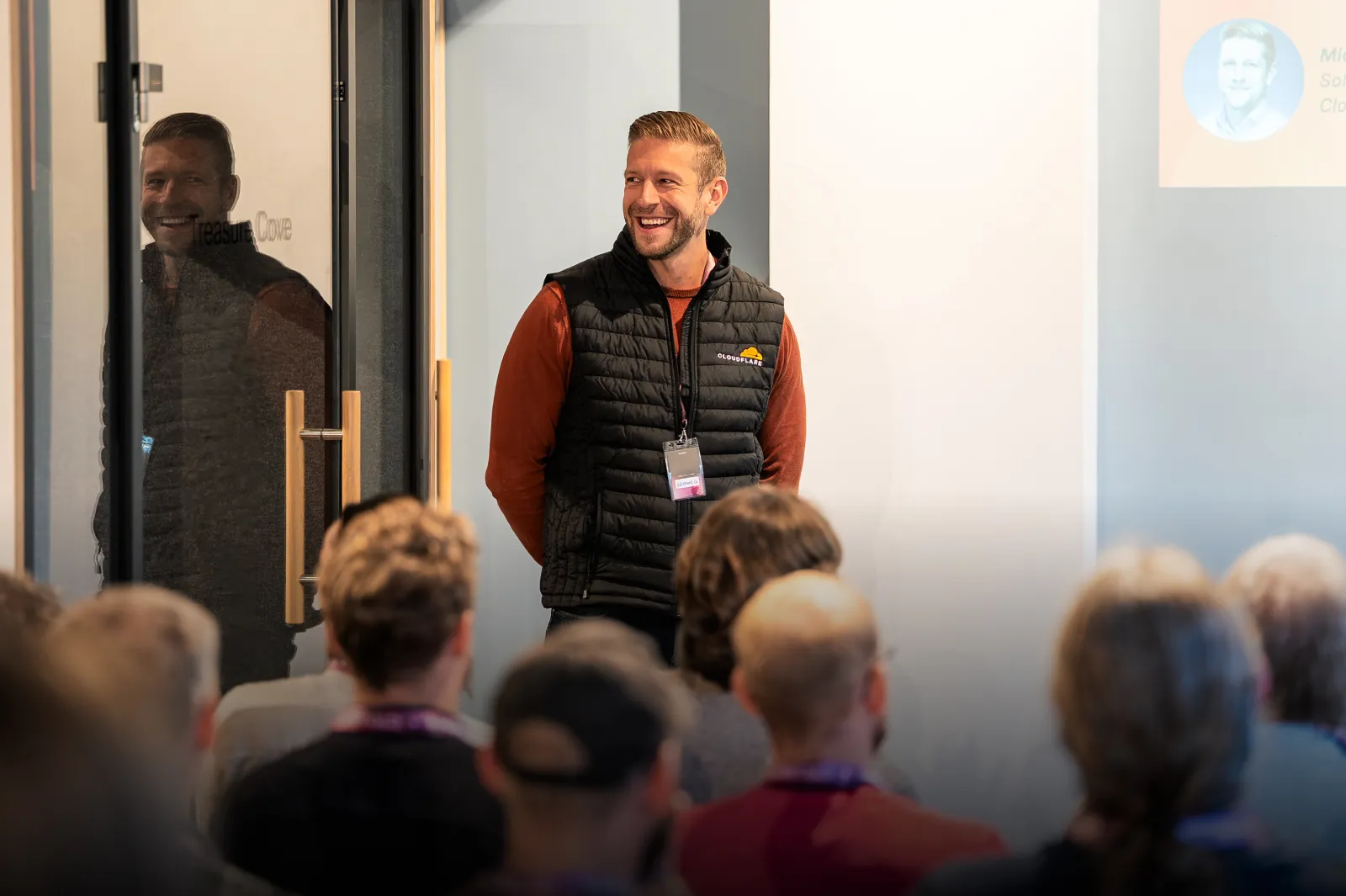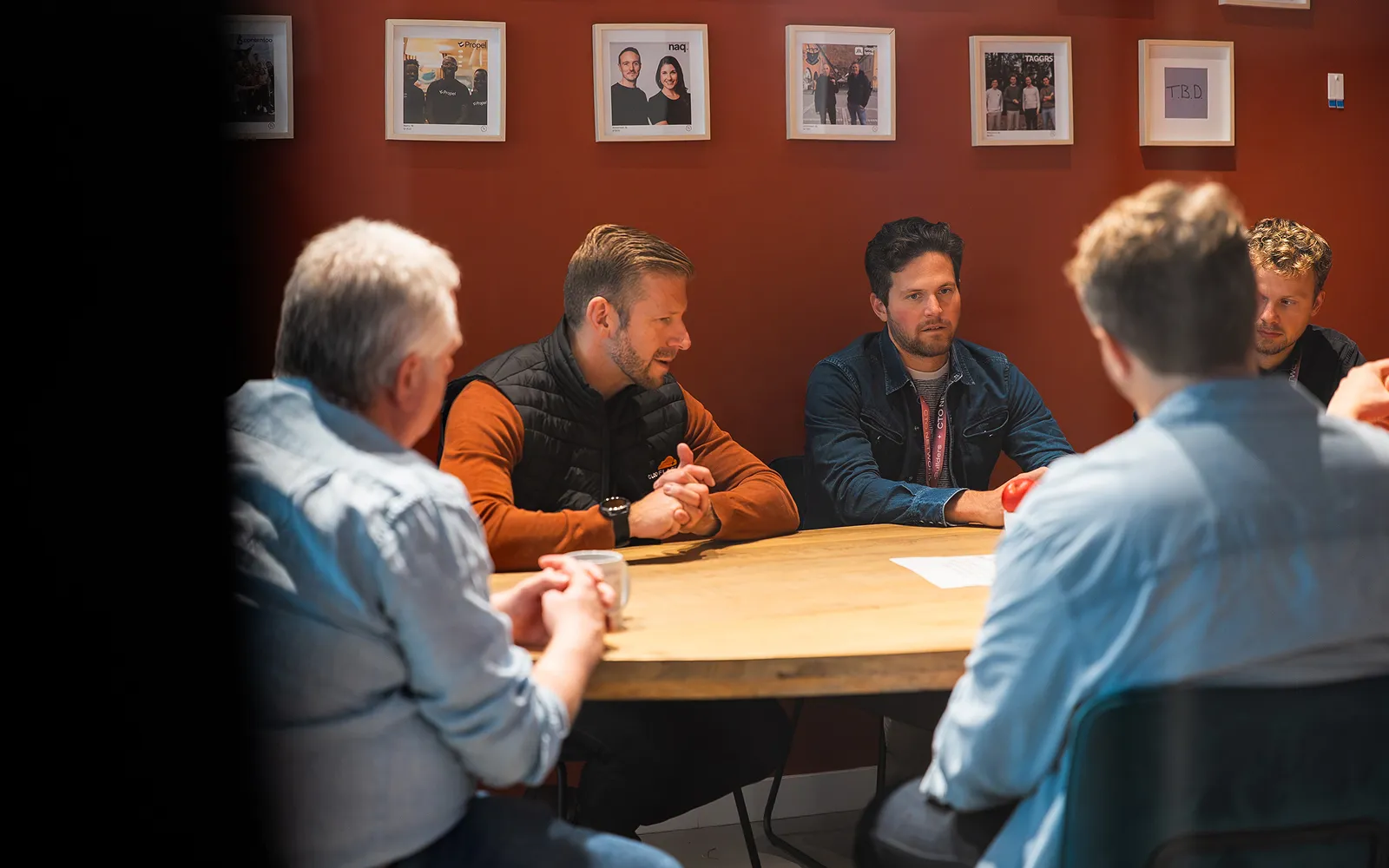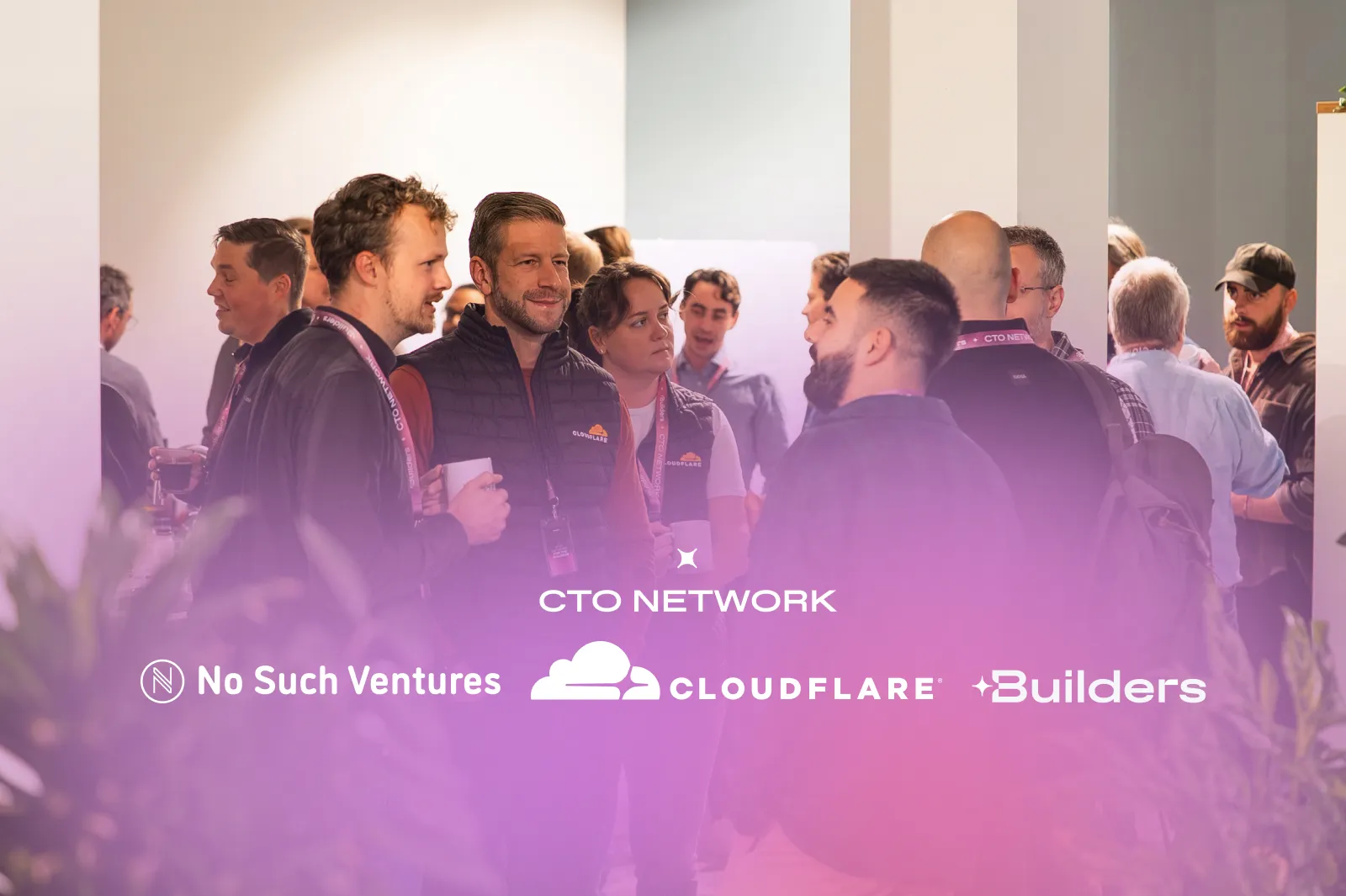Q&A with Michael Gustafsson: Building Systems That Don’t Break When You Move Fast
CTO
5 min
03 Nov 2025
If you’re a CTO or a founder, you know the moment: The system starts pushing back on speed. Artistically patched “temporary” fixes become the architecture. Deploys stall, costs creep , and you ask, “Is this what growing up in tech feels like?”


Intro
Recap
Business idea scope
Michael Gustafsson, now Solutions Engineer at Cloudflare and previously the steady hand behind Swedish government core rebuilds, has seen companies hit this wall at every stage. At October’s CTO Breakfast, we went deep on the inflection point where infrastructure stops being ‘just plumbing’ and becomes a real competitive moat.
Why Listen to Michael?
- Led national-scale rebuilds under public scrutiny, and lived to tell.
- Partner to Europe’s fastest-growing CTOs at Cloudflare.
- Advocates for discipline, transparency, and the right kind of speed.
We caught up to talk about the point where infrastructure stops being plumbing and starts being strategy.
You’ve worked in both public and private sectors. Which one taught you more about moving fast without breaking things?
The public sector, easily. People assume it’s slow, but the discipline is the point. Strong guardrails, clear governance, predictable patterns. It forces you to build correctly from the start.
Startups romanticize speed, but most of them mistake motion for progress. They hack it together, tell themselves they’ll fix it later, and never do. Then you end up with an architecture no one fully understands.
The public sector showed me that speed built on shaky ground isn’t speed, it’s deferred pain. If you want to move fast, start by building something that can survive it.
Infrastructure used to be something investors ignored. Now it’s part of the pitch. When did that flip for you?
When I joined Cloudflare. That’s when I saw infrastructure being used as strategy, not support.
Customers weren’t just buying reliability, they were buying trust, reach, and confidence that the platform would stay fast under pressure.
Your architecture is your velocity. It decides how often you can deploy, how fast you can respond, how safely you can experiment. The smartest companies I work with understand that infra isn’t a cost line, it’s leverage.
If you’re still treating it as plumbing, you’re already behind.
Every scale-up says they’ll handle tech debt later. You’ve seen it go wrong, what’s the pattern?
Tech debt doesn’t kill you in a straight line, it bleeds you out slowly. You lose observability, repeatability, and institutional memory. Suddenly every release is a risk assessment. The common thread is lack of discipline early on: no infra-as-code, no consistent patterns, no documentation. When you don’t codify how you build, you can’t scale how you build.
The teams that do it right treat automation and standards as force multipliers. That’s not bureaucracy, it’s how you buy future speed.
What’s the most expensive mistake you’ve made?
"Cloud cost blindness."
I’ve seen companies spend absurd amounts of money on traffic they didn’t even know they were generating. Not because they’re reckless, just because the systems became too complex to reason about. AWS taught me that lesson the hard way. You can architect your way into six-figure bills without realizing it.
That’s why I value Cloudflare’s “scale to zero” principle. If you don’t use it, you don’t pay for it. Simplicity scales. Cost visibility is a design requirement, not something finance should figure out after the fact.
One infrastructure trend that’s overrated, and one that’s underrated, for European builders?
Overrated: Multicloud from day one. It’s complexity cosplay. You’re adding cost, latency, and governance overhead before you even have product-market fit. Get one stack solid, learn how to run it well, then expand.
Underrated: Edge-native architectures. Running closer to users, reducing ops load, building once and deploying everywhere, that’s a real advantage. And Europe, with its data laws and latency constraints, benefits more than most regions from that model.
Edge-native isn’t just faster: it’s simpler, cheaper, and safer when done right.

What’s something you stopped doing as a technical leader that made your team better?
Writing clever code.
The older I get, the less I care about elegance and the more I care about repeatability. I used to want to be the one who solved the hardest problems personally. Now I’d rather design a framework that prevents those problems entirely.
Hero engineering doesn’t scale. Teams that rely on heroes burn out; teams that rely on systems compound velocity. If your team’s success depends on one person’s brilliance, you don’t have a system, you have a liability.
Three years from now, what infrastructure decision will separate Europe’s unicorns from its casualties?
The ones that learn to build with, and around, AI.
We’re heading toward “agentic” infrastructure: systems that generate, deploy, and retire themselves based on intent. That’s going to compress build cycles from months to hours. The real challenge won’t be capability, it’ll be governance. Who owns the guardrails? How do you control cost, security, and compliance when code writes itself?
The companies that solve that will lead. The rest will be buried in their own automation debt.
Final thought?
What makes Michael interesting isn’t his résumé, it’s the mindset. He treats infrastructure as product, culture as leverage, and discipline as a multiplier. In a world chasing “move fast,” he’s reminding European builders what keeps speed sustainable.
That’s exactly the kind of voice we built this network for: not loud, just signal.
OUR UNIVERSE

BUILD WITH US
Backing bold founders from day zero — pairing ambition with deep technical leverage, operational firepower to create category-defining companies.
CTO NETWORK
Curated Network for Europe’s to builders — from AI to deep tech. Private events, shared signals, and deep conversations for those who are in it.

OUR UNIVERSE

BUILD WITH US
Backing bold founders from day zero — pairing ambition with deep technical leverage, operational firepower to create category-defining companies.
CTO NETWORK
Curated Network for Europe’s to builders — from AI to deep tech. Private events, shared signals, and deep conversations for those who are in it.

Techno optimist?
Join our CTO NETWORK.
Leverage your deep expertise to craft breakthrough magical solutions.

Got a Venture idea?
Pitch it at Builders.
Are you a future CTO or CEO, sitting on a valuable business proposition for the future of Work and AI? We are here to listen and give the support you need to make it happen.

Join next Investor house event
Builders Investor House brings together operator angel investors involved in the venture studio space.

Side reads

December 11, 2025
Databricks & Builders: CTO Breakfast Recap
The Builders CTO Breakfast at Databricks brought together engineering leads for honest technical conversations about building agentic AI systems in production, navigating architectural stability, and the hard truth that you don't know how agents behave until real users touch them.

October 30, 2025
No such ventures, Cloudflare: Builders CTO Network Breakfast recap
Infrastructure costs forcing rethinks; EU compliance as a secret advantage; and cloud bills that don't make sense anymore. These are the conversations that unfolded when CTOs gathered at No Such Ventures for the CTO Network Breakfast.

October 13, 2025
5 Questions with Jordi Wippert, Co-founder & CTO at The Selection Lab
For this edition of the Builders CTO Network, we sat down with Jordi Wippert, co-founder and CTO of Selection Lab, to talk about staying close to the product, cutting noise, and what separates people who ship from people who manage.
